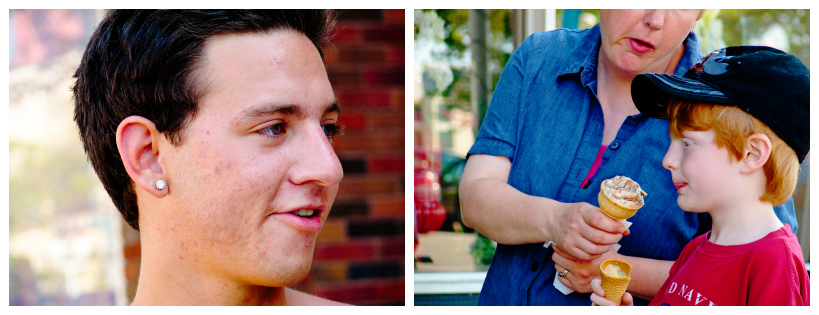
A friend wrote to me yesterday. She does that now and again, though sometimes she calls. She always asks how I am, but that isn’t the complete reason for her contacting me. She will occasionally sigh and volunteer, “I just wanted to hear your voice.” And, she means it. That melts my heart. I would never rebuff her or mechanically go through the motions of indulging her. Why? Because I both care for and about her. So, what does caring look like? What does it sound like? What does it feel like, both on the giving end and on the receiving? And, what are the consequences all around? As to the first three questions, you can pretty much get a healthy taste of what caring looks like, sounds like, and feels like from the images above. That is, unless some brain abnormality or blinding stereotype regarding generic white people is blocking your understanding of what is right in front of you. For all the rest of us, the subtleties of facial expression and body language tell a very complete story. Caring eases muscle tension around the eyes, neck, and shoulders. Cringing evaporates. Caring arms embrace. Voices soften and sometimes tease, offer comfort and support, provide indications of wanting to understand what’s happening and help with distressing burdens. Grins and smiles, giggles, and sometimes tears of relief begin to appear. There is intense focus on each other, not on cell phones, billboards, LED screens, or sounds blasting from speakers. And regularly, caring actions attempt to alter the immediate physical environment, add warmth or quiet, coolness or shelter, refreshment, nourishment, even needed medial attention. The consequences of caring are not visible within the images above, but can be derived from mental extrapolations based upon what is evident within those images. One must ask what previous actions may have led to the caring depicted. And, one can imagine, with the wisdom gained from looking back, what impressions are being imprinted and what subsequent actions, habits, and behaviors might be inspired within those pictured. Of course, one singular set of images cannot comprehensively answer the consequence question. Only evidence of a strong pattern of actual cause and effect across many such instances of caring could serve as basis for at least a temporary answer. I say “temporary” because human behavior is only somewhat consistent over time. Experience changes us all. It is the community-wide mutual understanding of values, goals, expectations, and tolerances that allow members of a community to trust one another enough both to accept efforts of care and initiate caring for others. It is when those shared values, goals, expectations, and tolerances break down or prove maladaptive that trust, mutual caring, and community itself breaks down. History has shone that what arises in their place, like alienation, anger, violence, and war, are not pretty, comforting, healthy, safe, or likely to be sustainable of life on this planet. Sustainable cultures supporting wide-spread mutual caring require both adaptive innovation and willingness across community members to be open to testing, critical reevaluation, retesting, and eventual implementation of innovative adaptive wisdom. Only then can caring, with all of its beneficial consequences, survive inevitable change. Stubborn adherence to what is now failing to work, nor violence, intransigent anger, or war, will never prove sustaining of a caring culture. May the smile, hug, helping hand you receive or offer today have lasting and beneficial consequences for each and every one of us on this remarkable, wondrous, inspiring, and worryingly fragile blue planet of ours. |
• Posted: Aug 20, 2024 10:42:56
• Comments Welcome
• Vote CoolPhotoblogs
• Purchase a Print
• Share
Monday, May 30th, 2011 St Joseph MI USA |